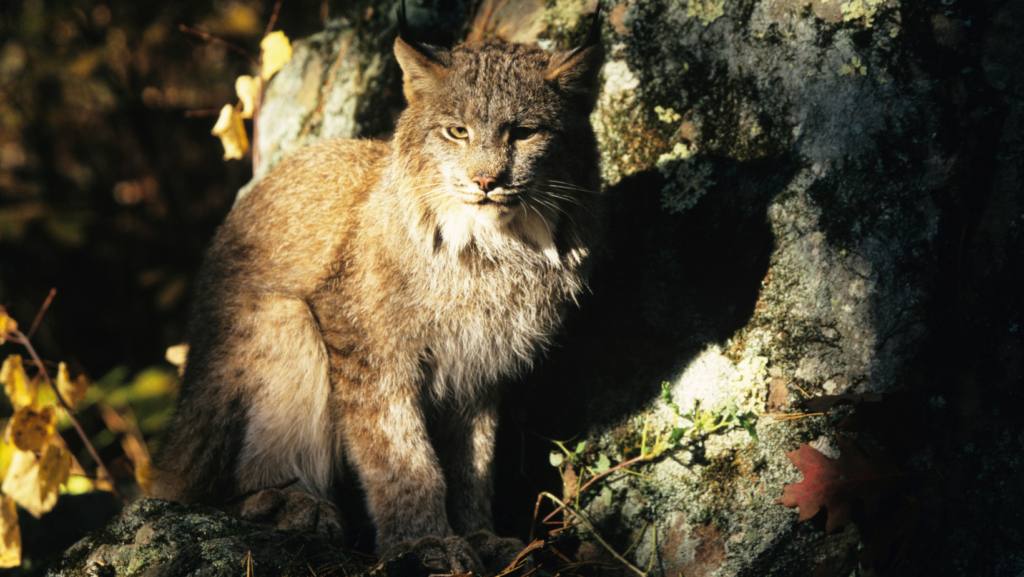Canada Lynx: Unveiling the Mysteries of the Northern Forests

The Canada lynx (Lynx canadensis) is a captivating and elusive wild cat species native to North America. Flourishing in the boreal and alpine forests of Canada and parts of the United States, the Canada lynx is well-adapted to the harsh, snow-covered landscapes it calls home. Let’s embark on a journey through the life cycle of this enigmatic feline, exploring its birth, growth, food habits, habitat, reproduction, and the inevitable cycle of life and death.
Birth and Early Life:

Canada lynx kittens are born in dens concealed amidst dense vegetation or hollowed tree trunks. A typical litter consists of one to four kittens, born after a gestation period of approximately two months. These fuzzy bundles of fur are initially blind and helpless, relying entirely on their mother for sustenance and protection.
As they grow, the kittens’ eyes open, revealing striking blue hues that gradually shift to amber as they age. The mother lynx diligently nurtures and educates her offspring in the art of survival, teaching them essential skills such as hunting and navigating their forest habitat.
Grown-Up Life:
The Canada lynx is characterized by its distinctive appearance, featuring tufted ears, a short bobbed tail, and large, padded feet, ideal for navigating deep snow. These medium-sized cats possess a thick, grayish-brown fur coat adorned with dark spots, providing effective camouflage in their woodland surroundings.
Grown-up lynx are agile and adept hunters, relying primarily on their exceptional sense of hearing and keen eyesight to locate prey. Their preferred diet consists mainly of snowshoe hares, although they may also target birds, rodents, and occasionally larger mammals when hares are scarce.
Food Habits:

The Canada lynx’s diet is intricately linked to the cyclic fluctuations in snowshoe hare populations. As hares experience boom and bust cycles, so too does the lynx population. During periods of abundance, lynx thrive, while scarcity prompts them to venture further in search of sustenance. These cats are known for their patience, often relying on stealth and ambush techniques to secure a meal.
Hunting primarily at night, lynx have adapted to the challenges posed by their snowy habitat. Their large, padded paws act like snowshoes, allowing them to move effortlessly across deep snow in pursuit of prey. The lynx’s remarkable ability to detect the slightest sounds beneath the snow gives it a distinct advantage in capturing elusive hares.
Habitat:
The Canada lynx is an emblematic resident of boreal and alpine forests, favoring dense coniferous or mixed forests where snowshoe hares are abundant. This elusive cat’s range extends across the northern regions of North America, encompassing Canada, Alaska, and certain parts of the contiguous United States. Lynx thrive in environments characterized by deep snow, providing them with both insulation and a strategic advantage in hunting their primary prey.
The lynx’s habitat is also influenced by the availability of suitable den sites for raising their young. These cats may use natural shelters, such as rocky crevices or fallen trees, as well as construct temporary nests in the dense underbrush.
Reproduction:
Canada lynx engage in a fascinating courtship ritual, involving vocalizations and scent marking to attract mates. Breeding usually occurs during the winter months, aligning with the peak availability of their primary prey, snowshoe hares. The gestation period lasts around two months, with female lynx giving birth to a new generation of kittens in the safety of concealed dens.
Lynx mothers are fiercely protective and nurturing, ensuring their kittens receive the guidance needed to survive in their challenging environment. The kittens remain with their mother for several months, honing their hunting skills and gradually becoming more independent as they reach maturity.
Death:
The life of a Canada lynx is subject to the harsh realities of the wild, with factors such as predation, competition, and environmental challenges influencing their mortality. Lynx may fall prey to larger predators like wolves and cougars, and they face the perpetual challenge of securing enough food to sustain themselves in fluctuating ecosystems.
Disease and environmental changes, including the impact of human activities on their habitat, can also pose threats to lynx populations. The balance between predator and prey, as well as the availability of suitable habitats, plays a pivotal role in determining the lifespan and survival rates of Canada lynx.
In conclusion, the Canada lynx remains an emblem of the northern wilderness, adapted to thrive in the challenging landscapes it calls home. From the delicate beginnings of life in a concealed den to the agile and solitary existence of a grown-up predator, the Canada lynx navigates the intricate dance of survival in the wild, contributing to the delicate ecological balance of North America’s vast and awe-inspiring forests.

